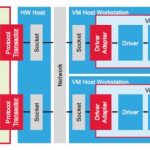ASML reported results in line and slightly ahead of expectations which helped push ASML and the other semicap stocks back to their original valuations prior to the two step pull back that lasted about a month. We are now back to relatively high, record valuations not seen or ever seen previously (at least for a long time) by many companies.
Rather than the negative performance we saw with Micron’s earnings it seems the market is more receptive and less cautious in the current earnings cycle.
Memory, both NAND & DRAM continue to be the primary incremental spenders that are powering the current strong up cycle.
While we remain bullish on the strength of the current cycle and think it has legs we remain on guard for any signs of weakness in the memory market that could end the party
Separately, Applied announced the transition of its CFO from Bob Halliday to Dan Durn, formerly CFO of NXP. Its as good a time as any to make the change as things are about as good as it gets in the industry and Applied is humming.
Thanks for the memories…
Looking at ASML and all that we heard at Semicon, its very, very clear that memory and its associated spending is making all the difference in the world to the semicap space. TSMC’s spending will be down by 50% in H2 and Intel isn’t lighting any fires in spending although we may see an uptick once the 10NM process is locked down in Israel. Samsung remains the spender du jour with memory being their primary target.
Memory always makes us nervous as DRAM spending seems to start and stop without much warning slowing DRAM has been the cause of prior cyclical down turns.
Good Memories and Bad Memories….NAND & DRAM
In our view, which we have talked about many times, NAND remains an almost perfectly price elastic market with almost infinite demand while DRAM is a finite, somewhat price inelastic market with limited demand. Demand for NAND always seems to soak up supply while DRAM has without doubt gotten into oversupply situations that take a while to wring out excess capacity.
We get more nervous when ASML talks about more DRAM business but seems to have a less clear idea of the length or depth of that demand.
Semicap companies don’t have a lot of choice in the matter. They have to sell equipment while the sun shines, wether its to logic, memory or foundry and no one is going to turn down business because its DRAM business. But as the amount of DRAM increases , so does the exposure to the most volatile end market.
Investors seem resilient and receptive
Given the bounce back we have seen in the stocks, the pull back now seems like just a passing, bad dream. The speed of the bounce back seems to indicate the underlying support for the stocks and the long term positive semiconductor story.
Intel – Lost in translation?
We will be very curious as to Intel’s report and how it relates to 10NM. We haven’t heard a lot about 10NM progress. We were the first to report on the delays in 10NM process, and we thought that things had gotten nailed down but something seems to have happened on the way to Intel’s fab in Israel. Perhaps the recipe got lost in translation.
What we would like to hear is that Intel has worked out the bugs and will ramp to volume and ramp capex but we don’t think so…..perhaps we will be pleasantly surprised.
Samsung wants to triple foundry business
Samsung has publicly said it wants to expand its foundry business over the next 5 years to close the gap with TSMC. We think at least part of the reason that Samsung has been leading the EUV parade is to try to gain any sort of process advantage over TSMC to try to win foundry business. We don’t think its going to help Samsung a lot and we think Samsung is doing a bit of wishful thinking about foundry upside as many customers will still be concerned about using a potential competitor as a foundry….and that starts with the biggest semiconductor buyer of all….Apple.
The stocks
As long as CEOs and CFOs don’t say anything stupid on their conference calls we will likely have a pretty good earnings season given the tone in the stocks and ASML’s lead. Business remains super strong and the long range radar is also in good shape. We are more positive exiting Semicon as the negative tone from investors has also vaporized.
We would expect most to report a beat and raise. Sub suppliers in the space seem to be doing best out of the group.
Applied passes the CFO torch
Bob Halliday, AMAT’s CFO is transitioning out to an eventual retirement and he is going out on a very high note at a great time. Following in his footsteps will be hard but Applied got about the best we could imagine. Dan Durn has experience from NXP & Freescale, Global Foundries and ATIC. Naval Academy with control systems and Columbia business school. Sounds like someone from central casting. Can’t get much better than that CV. The cherry on top is an M&A stint at Goldman, the training ground for much of the financial world. We think this could certainly help AMAT work on some inorganic growth which will be difficult after the TEL fail and KLAM kollapse.
We wish both Bob and Dan great success in their new respective roles with the knowledge that both will likely excel given their track records and the AMAT surroundings.






